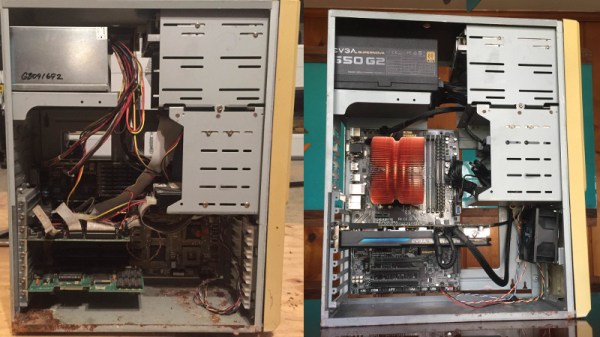[MeasuredWorkshop] wanted to know how a boxing bell mechanism worked. The best way to learn is by doing, so he jumped right in and built one! Boxing bells are a rare surviving example of the trip bell mechanism. Trip bells were used in schools and public buildings as fire alarms. They’ve since been replaced by modern electric systems.
The mechanical linkage behind the trip bell is a one-way lever. This is the arm you pull on. It has a hinged section which stays rigid when the arm is pulled down, but rotates away when the arm is released. [Measured Workshop] built the mechanics of his bell using rather basic tools. The brunt of the work was handled by an angle grinder and a drill press.
The sounder for this boxing bell came from an old school bell. The industrial grey paint was chemically stripped, and the metal cleaned up for a nice brushed finish. The metal stands out nicely against the wood board [Measured Workshop] used as a base.
The finished product looks and sounds the part – now he just has to find a boxing gym in need of a bell!
We’re really becoming fond of the “wordless workshop” style videos that have been popping up on YouTube. [Jimmy DiResta] has been doing it for years, and relative newcomers [HandToolRescue] and [Measured Workshop] are both producing some great content!




















